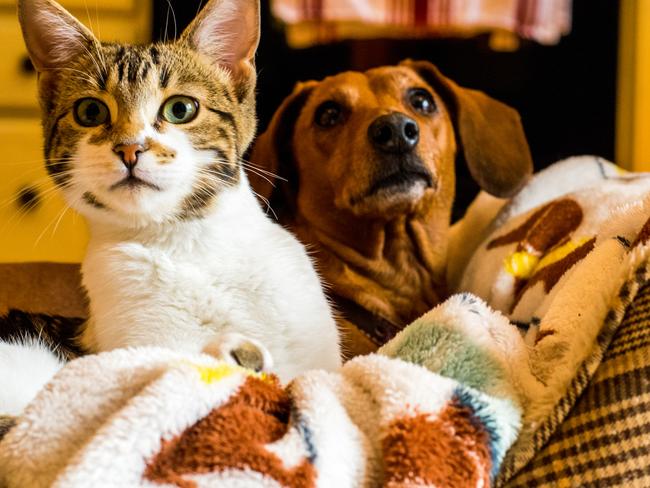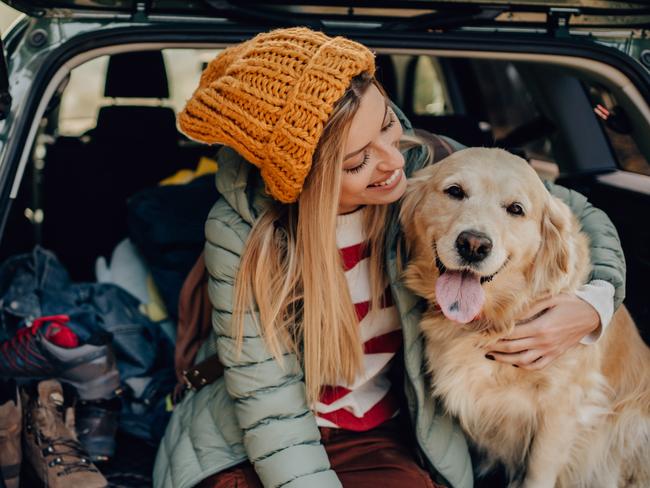Pet advice: taking the stress away from moving home
Our pets hate change more than we do, luckily there are simple ways to alleviate their fear and anxiety.
Pets
Don't miss out on the headlines from Pets. Followed categories will be added to My News.
Pets are often the family members most affected by a move, whose needs are often the least considered.
They can go through the whole gamut of emotions before, during and after relocation: from anxiety to travel sickness, unease with their new environment and even grief for what they have lost.
Like us they will have left familiar places (and smells) and friends behind, so you need to make the transition to a new life as smooth and even as predictable as possible for your pet or pets.

“Dogs and cats are creatures of habit, they like to have their own place and space to call home. So, when they are moved from their familiar environment, or have their daily routines disrupted, they can become stressed and anxious,” says Lara Shannon, Dog Trainer and Behaviourist, and Host of Channel 10’s Pooches at Play,
“When moving home with your dog or cat it is important to remember that this can be quite traumatic for many of them.”
You’ve planned your move meticulously and with the purpose of a military operation. Include your pets of part of that deal and everyone will feel safe and secure in their new home.
Here are five tips from Lara to make the life-altering moving house as pleasant as possible, to reduce stress and ensure your best mate wants the new move to be a permanent one.

TIPS FOR MOVING HOME WITH YOUR PETS
Dogs and cats are creatures of habit, they like to have their own place and space to call home. So, when they are moved from their familiar environment, or have their daily routines disrupted, they can become stressed and anxious.
When moving home with your dog or cat it is important to remember that this can be quite traumatic for many of them, so there are a few key things you can do to help reduce their stress as much as possible.
1. Familiarise your dog to the new place before the actual move
If it at all possible, visit your new home with your dog before you move in and allow them to have a sniff around the house and/or the yard and local area. Take them for a walk around the neighbourhood and ideally try to do this a few times before the big day.
2. Create a positive association with the new home
If your dog is food motivated, it’s a good idea to use treats to create a positive association when they arrive at the new place and reward any quiet, calm, or inquisitive behaviour. By always rewarding your pet when they display the behaviour you want from them, it encourages them to do it more. If they are more toy or play motivated, you can use those instead too.

Keep in mind new things in the house that your dog may not have encountered before, which therefore may make them nervous or they may want to avoid. This can include stairs, slippery floors, or different kinds off surfaces in the yard which may also impact on their toileting habits, requiring you to show them where you want them to go and back to basic toilet training. Never force them to go into/onto places they are clearly afraid of, instead use positive training techniques to slowly desensitise and help them overcome their fear. Talk to a trainer if you need help.
3. Check your new home is puppy/dog proofed
If your puppy or dog can fit its head through a gap or hole then it can generally get the rest of its body through, so check there are no areas they can dig holes to escape through, gates and fences are secure (pool and spa ones too), no gaps where they can crawl in and get stuck under the house or behind the shed.
If you live in an apartment and have a balcony, make sure any gaps (no matter how small) are closed off and that there is nothing your dog can climb up on … and over!
Fence height may also be an issue for certain breeds. Some breeds can scale a 6-foot wall, again make sure there is nothing they can use to get leverage, and affix lattice at an inward slant to prevent them getting over.
Hide any exposed wires or cords inside and out, keep toxic chemicals out of the way, and research the plants that are toxic for dogs and cats.

4. Provide them with their own safe space and stick to routines
Immediately set them up with their own area, a nice quite room away from all the mess and unpacking where you can place their bed, toys and creature comforts, cat climbing towers and kitty litter etc. Same with their food and water.
Many animals will stop eating when they are stressed or anxious, so make sure everything is quiet and calm around feeding time. You can use pheromone diffusers around the home such as Adaptil for dogs and Feliway for cats which may help to relax them. Stick to their usual feeding and exercise routines to keep life as normal as possible despite the new surroundings.
Many councils now have legislation stating cats can’t roam from their property, whilst indoor cats have a significantly longer life span compared to cats allowed outdoors. Cats should ideally be kept inside for at least three weeks – set up with plenty of high perches where they can watch the world go by, and ideally consider setting up a cat run in your yard rather than allowing your cat to roam free.

5. Don’t leave them alone or out too early
Let your dog settle in fully before leaving them home alone, at least a few days for dogs. Start going out for only very short trips and ensure they have plenty of environmental enrichment to help keep their brains and bodies stimulated. From adequate exercise, interactive toys and puzzles, hiding treats around the home or yard, leaving the TV or radio on (there is a streaming platform called ‘Dog TV’ which can help) and possibly even medication if their anxiety is severe. Separation anxiety is akin to a panic attack in humans and can be extremely distressing for both pets and humans.
Lara Shannon, is a certified Dog Trainer & Behaviourist, Host and Executive Producer of Channel 10’s Pooches at Play, Author of Eat, Play, Love (your dog) and World of Dogs – being released in October 2021 and Editor of Poochesatplay.com
Originally published as Pet advice: taking the stress away from moving home





